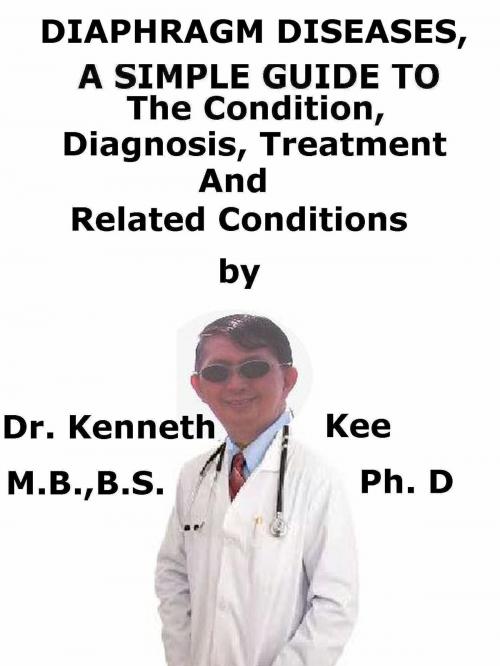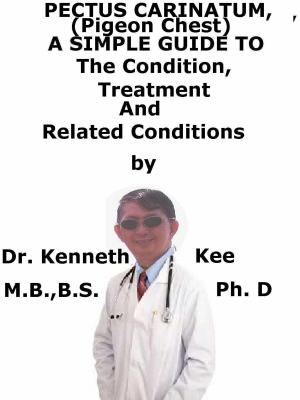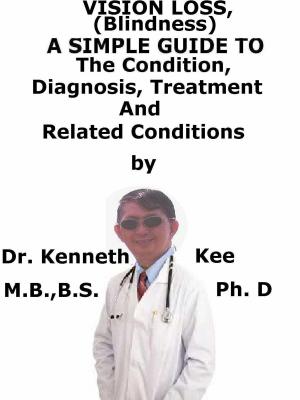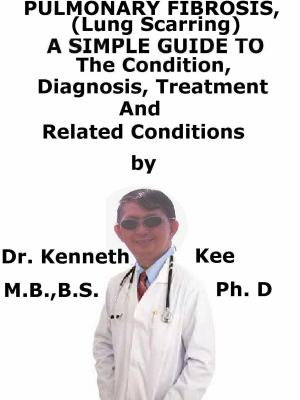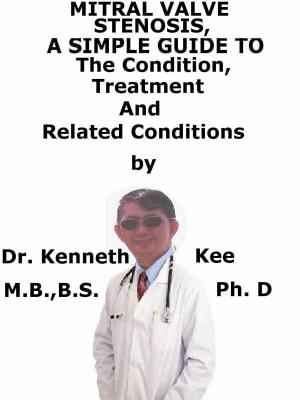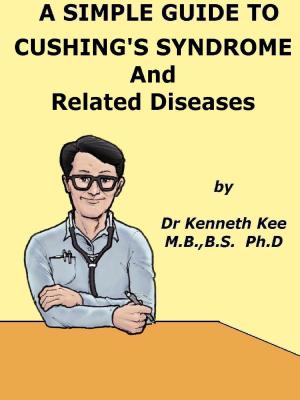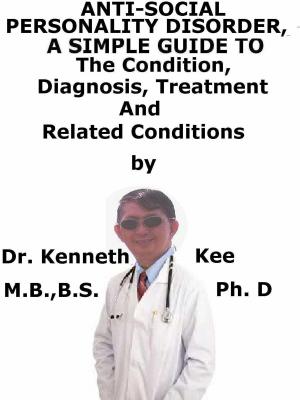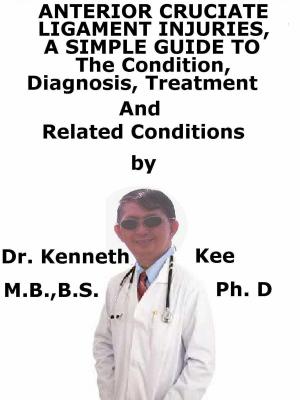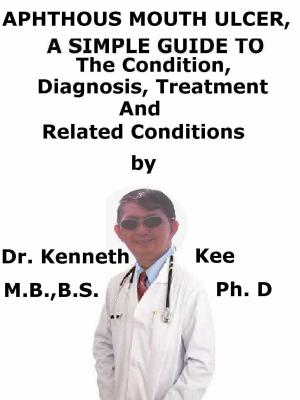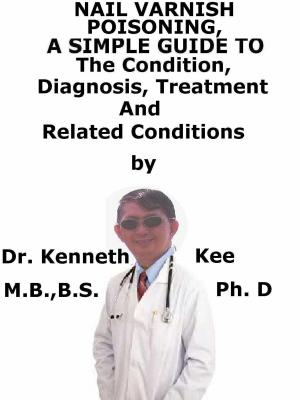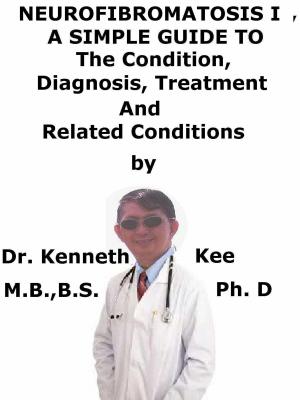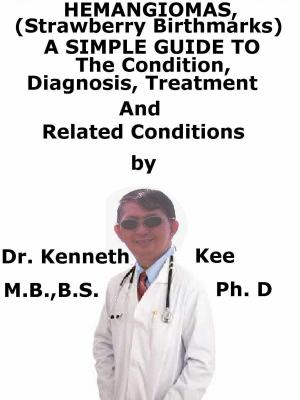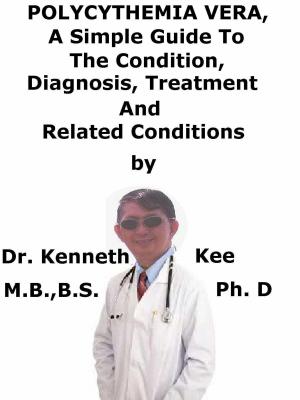Diaphragm Diseases, A Simple Guide To The Condition, Diagnosis, Treatment And Related Conditions
Nonfiction, Health & Well Being, Medical, Specialties, Pulmonary & Thoracic, Health, Ailments & Diseases, Respiratory| Author: | Kenneth Kee | ISBN: | 9781370481569 |
| Publisher: | Kenneth Kee | Publication: | February 14, 2018 |
| Imprint: | Smashwords Edition | Language: | English |
| Author: | Kenneth Kee |
| ISBN: | 9781370481569 |
| Publisher: | Kenneth Kee |
| Publication: | February 14, 2018 |
| Imprint: | Smashwords Edition |
| Language: | English |
This book describes Diaphragm Diseases, Diagnosis and Treatment and Related Diseases
The diaphragm that separates the thoracic and abdominal cavities is the main muscle involved in breathing.
Similar to any organ or muscle, the diaphragm is prone to disorders and anomalies, which come in many different forms and can result from injury or illness.
Diaphragm disorders can result from nerve damage, primary muscle problems, or problems with the muscle's interaction with the chest wall.
Causes
Causes of diseases of the diaphragm differ, but they are normally an effect of disorders with the anatomy or the neurological system, such as:
1.Congenital defects, which happen at birth and have no known cause
2.Acquired defects, which occur as the result of an injury, accident or surgery
a.Stroke
b.Muscular disorders, such as muscular dystrophy
c.Multiple sclerosis
d.Thyroid disorders
Symptoms
Unilateral diaphragmatic paralysis or weakness rarely causes symptomatic dyspnea at rest, but may result in dyspnea on exertion or the patient's voluntary restriction of activity.
It can occasionally cause dyspnea when lying on one's back
Frequently, unilateral diaphragmatic paralysis is detected incidentally on a chest X-ray obtained for other purposes.
Bilateral diaphragmatic paralysis often produces dyspnea at rest, during exertion, when lying supine (need sleeping in a recliner), bending over, or when swimming in water above waist level.
Sleep disorders are also frequently in these patients
Repeat occurrences of pneumonias (possibly due to basilar collapse of the lung) and repeat occurrences of respiratory failure are also possible.
Many people with diaphragmatic paralysis compensate well when at rest and are not acutely ill.
Symptoms differ based on the disorder, but may be:
1.Discomfort or difficulty breathing
2.Pain in the chest, shoulder or abdominal area
3.Hypoxemia (a lack of oxygen in the blood)
4.Fewer breath sounds
Diagnosis
Chest X-rays in diaphragm paralysis may reveal elevated hemi-diaphragms and basal sub-segmental atelectasis
Fluoroscopy of the diaphragm (“sniff test”): The patient sniffs vigorously during fluoroscopy;
Descent of the diaphragm is the normal reaction.
Pulmonary function tests show restriction, which may be moderate to severe (30-50% forecasted total lung capacity) in bilateral diaphragmatic paralysis.
The limitation becomes worse when supine, with a proven drop in vital capacity of 30 to 50% in bilateral diaphragm paralysis.
Ultrasound can be very useful in evaluating diaphragmatic function.
The diaphragm should thicken with inspiration, indicating the shortening of the diaphragmatic muscles
Treatment
Treatment for diaphragmatic dysfunction normally comprises:
1.Watchful waiting,
2.Treating underlying causes, with mechanical ventilation if respiratory failure occurs.
Supportive treatment for Diaphragm
This is diaphragmatic pacing, which is the same as a heart pacemaker but the electrodes are implanted on the diaphragm to guide respiration
Surgery
This may require removing part of the diaphragm or abnormal tissue, folding the diaphragm, or repairing the muscle.
Repair may involve the phrenic nerve
Many patients with severe diaphragmatic dysfunction require ventilatory support.
Medical Care:
1.Any obvious contributing factors (hypo-kalemia, hypophosphatemia, high-dose steroids, neurotoxic drugs, neuromuscular blockers) should be removed.
2. Nocturnal noninvasive ventilation of people is used with:
An awake pCO2 of 45+ mm Hg;
Nocturnal hypoxemia (SaO2 < 88% of >5 consecutive min); or
3.Any sleep-disordered breathing, if present, should be treated with continuous positive airway pressure (CPAP) or nocturnal noninvasive ventilation
TABLE OF CONTENT
Introduction
Chapter 1 Diaphragm Diseases
Chapter 2 Causes
Chapter 3 Symptoms
Chapter 4 Diagnosis
Chapter 5 Treatment
Chapter 6 Prognosis
Chapter 7 Muscle Dystrophy
Chapter 8 Pleurisy
Epilogue
This book describes Diaphragm Diseases, Diagnosis and Treatment and Related Diseases
The diaphragm that separates the thoracic and abdominal cavities is the main muscle involved in breathing.
Similar to any organ or muscle, the diaphragm is prone to disorders and anomalies, which come in many different forms and can result from injury or illness.
Diaphragm disorders can result from nerve damage, primary muscle problems, or problems with the muscle's interaction with the chest wall.
Causes
Causes of diseases of the diaphragm differ, but they are normally an effect of disorders with the anatomy or the neurological system, such as:
1.Congenital defects, which happen at birth and have no known cause
2.Acquired defects, which occur as the result of an injury, accident or surgery
a.Stroke
b.Muscular disorders, such as muscular dystrophy
c.Multiple sclerosis
d.Thyroid disorders
Symptoms
Unilateral diaphragmatic paralysis or weakness rarely causes symptomatic dyspnea at rest, but may result in dyspnea on exertion or the patient's voluntary restriction of activity.
It can occasionally cause dyspnea when lying on one's back
Frequently, unilateral diaphragmatic paralysis is detected incidentally on a chest X-ray obtained for other purposes.
Bilateral diaphragmatic paralysis often produces dyspnea at rest, during exertion, when lying supine (need sleeping in a recliner), bending over, or when swimming in water above waist level.
Sleep disorders are also frequently in these patients
Repeat occurrences of pneumonias (possibly due to basilar collapse of the lung) and repeat occurrences of respiratory failure are also possible.
Many people with diaphragmatic paralysis compensate well when at rest and are not acutely ill.
Symptoms differ based on the disorder, but may be:
1.Discomfort or difficulty breathing
2.Pain in the chest, shoulder or abdominal area
3.Hypoxemia (a lack of oxygen in the blood)
4.Fewer breath sounds
Diagnosis
Chest X-rays in diaphragm paralysis may reveal elevated hemi-diaphragms and basal sub-segmental atelectasis
Fluoroscopy of the diaphragm (“sniff test”): The patient sniffs vigorously during fluoroscopy;
Descent of the diaphragm is the normal reaction.
Pulmonary function tests show restriction, which may be moderate to severe (30-50% forecasted total lung capacity) in bilateral diaphragmatic paralysis.
The limitation becomes worse when supine, with a proven drop in vital capacity of 30 to 50% in bilateral diaphragm paralysis.
Ultrasound can be very useful in evaluating diaphragmatic function.
The diaphragm should thicken with inspiration, indicating the shortening of the diaphragmatic muscles
Treatment
Treatment for diaphragmatic dysfunction normally comprises:
1.Watchful waiting,
2.Treating underlying causes, with mechanical ventilation if respiratory failure occurs.
Supportive treatment for Diaphragm
This is diaphragmatic pacing, which is the same as a heart pacemaker but the electrodes are implanted on the diaphragm to guide respiration
Surgery
This may require removing part of the diaphragm or abnormal tissue, folding the diaphragm, or repairing the muscle.
Repair may involve the phrenic nerve
Many patients with severe diaphragmatic dysfunction require ventilatory support.
Medical Care:
1.Any obvious contributing factors (hypo-kalemia, hypophosphatemia, high-dose steroids, neurotoxic drugs, neuromuscular blockers) should be removed.
2. Nocturnal noninvasive ventilation of people is used with:
An awake pCO2 of 45+ mm Hg;
Nocturnal hypoxemia (SaO2 < 88% of >5 consecutive min); or
3.Any sleep-disordered breathing, if present, should be treated with continuous positive airway pressure (CPAP) or nocturnal noninvasive ventilation
TABLE OF CONTENT
Introduction
Chapter 1 Diaphragm Diseases
Chapter 2 Causes
Chapter 3 Symptoms
Chapter 4 Diagnosis
Chapter 5 Treatment
Chapter 6 Prognosis
Chapter 7 Muscle Dystrophy
Chapter 8 Pleurisy
Epilogue
